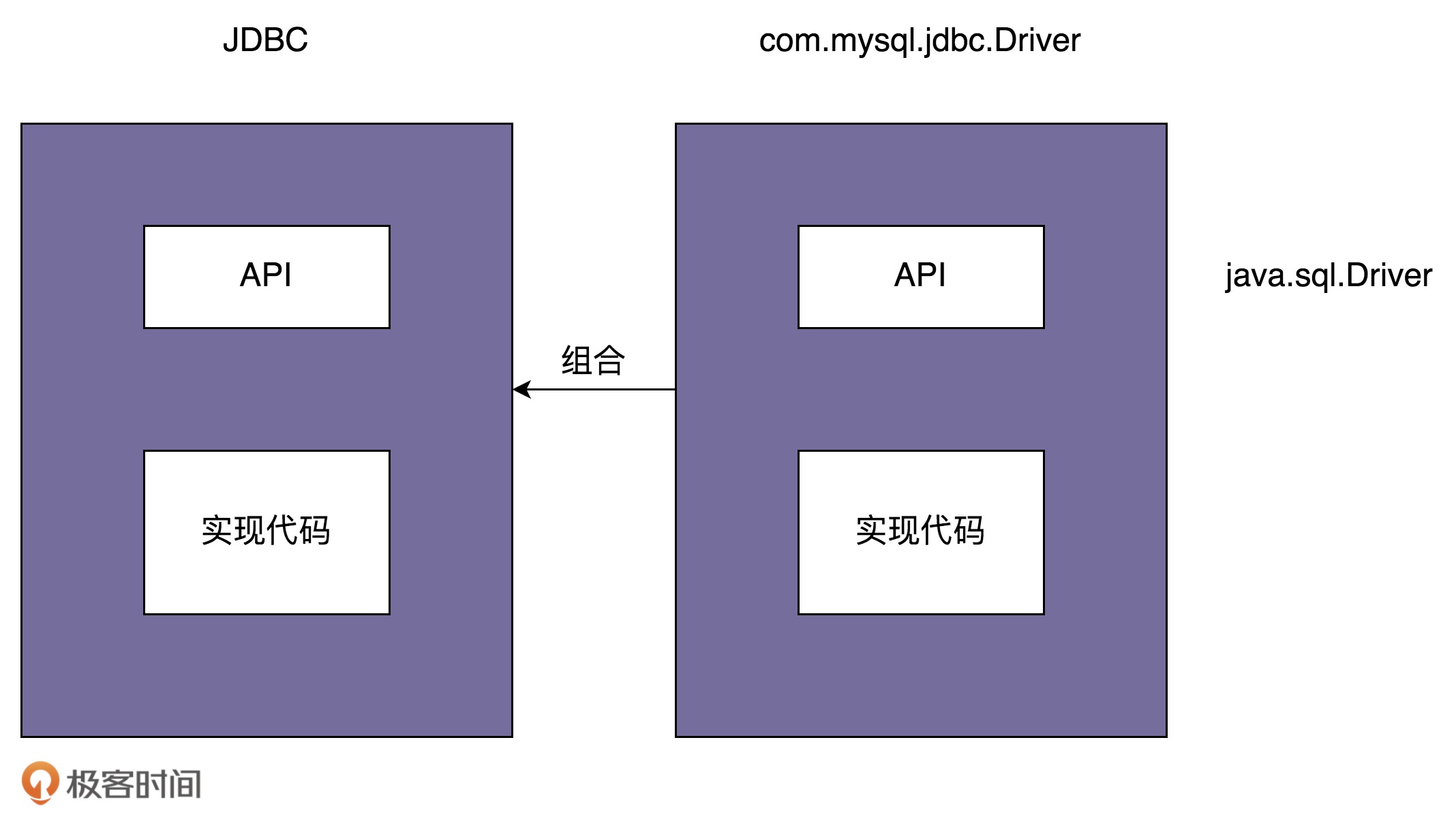桥接模式(Bridge Design Pattern)

定义
解释一:将抽象和实现解耦,让它们可以独立变化(例如Java的JDBC)

JDBC为“抽象的”接口(其实并非是严格的抽象类或者接口,而是与数据库无关的、被抽象出来的一套类库),
这里的实现也并非指接口的实现,而是跟具体数据库有关的一套“类库”
解释二:一个类存在两个(或多个)独立变化的维度,我们通过组合的方式,让两个(或多个)维度可以独立进行扩展
应用场景
go源码实现
告警有多种发送方式(电话、邮件、消息)对应不同级别的告警将需要不同的消息通知方式,通过桥接模式解耦告警类型及发送方式,以实现两部分独立演进
1
2
3
4
5
6
7
8
9
10
11
12
13
14
15
16
17
18
19
20
21
22
23
24
25
26
27
28
29
30
31
32
33
34
35
36
37
38
39
40
41
42
43
44
45
46
47
48
49
50
51
52
53
54
55
56
| package bridge
import (
"fmt"
)
type MessageSender interface {
send(msg string)
}
type PhoneSender struct {
}
func (ps PhoneSender) send(msg string) {
fmt.Println("phone send:" + msg)
}
type EmailSender struct {
}
func (es EmailSender) send(msg string) {
fmt.Println("email send:" + msg)
}
type Notification struct {
sender MessageSender
}
func (n Notification) send(msg string) {
n.sender.send(msg)
}
type NormalNotification struct {
Notification
}
type UrgencyNotification struct {
Notification
}
func NewNormalNotification() *NormalNotification {
return &NormalNotification{
Notification: Notification{
sender: EmailSender{},
},
}
}
func NewUrgencyNotification() *UrgencyNotification {
return &UrgencyNotification{
Notification: Notification{
sender: PhoneSender{},
},
}
}
|

